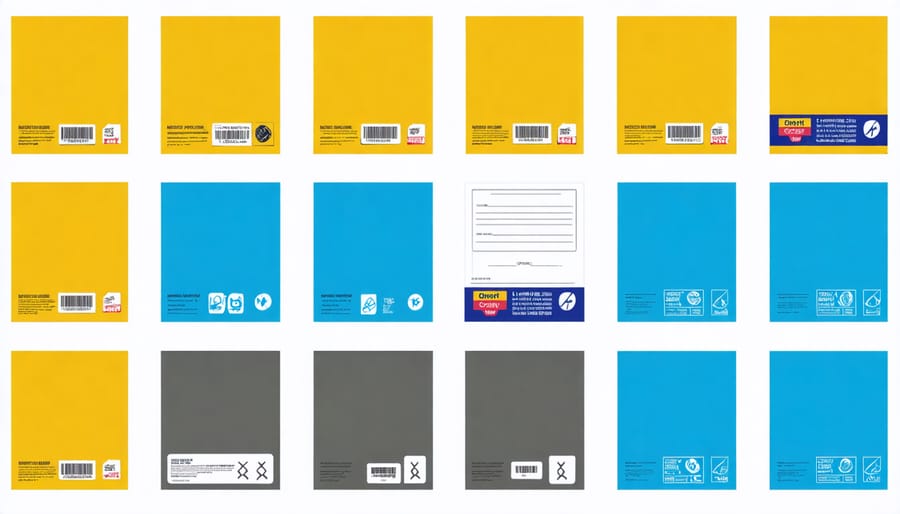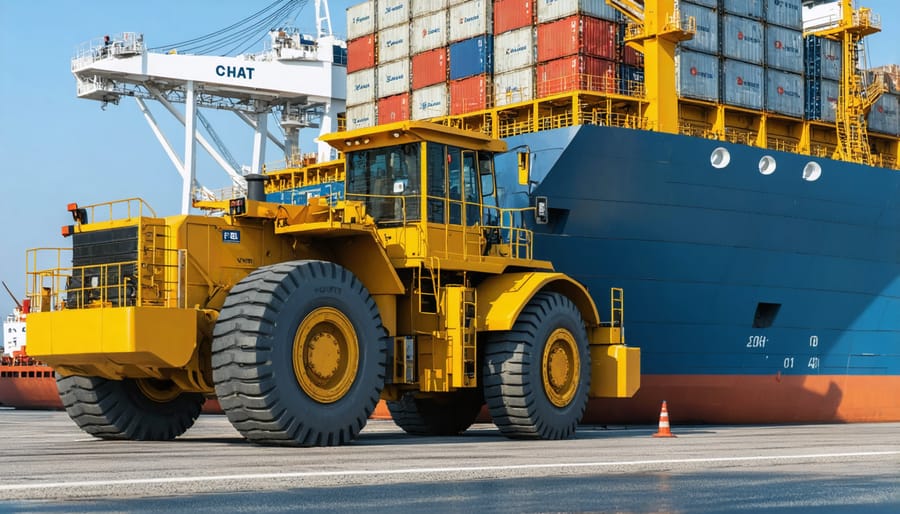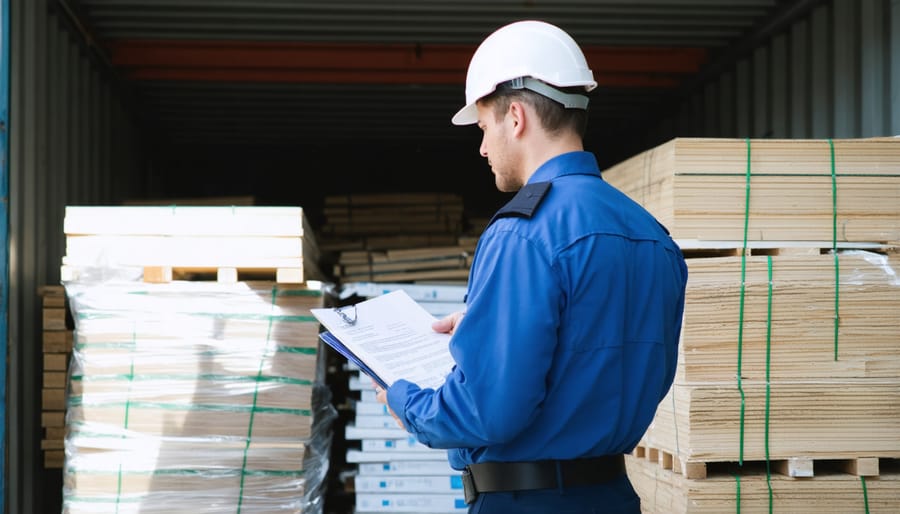Navigate today’s complex import-export regulations in construction with precision-engineered compliance systems that protect your international projects from costly delays and penalties. Rising global material costs, evolving customs requirements, and heightened scrutiny of cross-border equipment transfers have transformed how construction firms must approach international trade compliance. Construction leaders face a critical imperative: master the intricate framework of import-export regulations or risk project disruptions, material delays, and severe financial implications.
Recent changes to harmonized tariff schedules, enhanced documentation requirements for specialized construction equipment, and new sustainability standards for building materials have created additional layers of complexity for project managers and procurement teams. Understanding these regulations isn’t merely about compliance—it’s about maintaining competitive advantage in an increasingly globalized construction marketplace where efficiency in international trade can significantly impact project timelines and budgets.
This comprehensive guide examines current import-export regulations through the lens of construction industry requirements, offering practical strategies for navigating customs procedures, managing documentation requirements, and implementing effective compliance programs. From heavy equipment temporary imports to permanent material sourcing, we’ll explore how leading construction firms are adapting their international trade practices to meet evolving regulatory demands while maintaining project momentum.
Critical Changes in Construction Material Regulations
Safety Standards and Certification Requirements
International trade in construction materials requires strict adherence to construction quality standards and safety standards established by recognized certification bodies. Key certification requirements include ISO 9001 for quality management systems, CE marking for European markets, and ASTM compliance for U.S. imports.
Materials must undergo rigorous testing and certification processes before crossing international borders. This typically involves third-party verification of physical properties, chemical composition, and performance characteristics. For structural materials like steel and concrete, manufacturers must provide detailed documentation of strength testing, durability assessments, and quality control procedures.
Fire resistance ratings and environmental impact certifications are mandatory for most building materials. Products must meet specific flame spread indices, smoke development ratings, and volatile organic compound (VOC) emission limits. Environmental Product Declarations (EPDs) are increasingly required, particularly in developed markets, to demonstrate sustainability compliance.
Electrical components and equipment require additional certifications such as UL listing in North America or IEC compliance for international markets. These ensure electrical safety and electromagnetic compatibility across different voltage systems and installation environments.
Documentation requirements include certificates of conformity, test reports, and material safety data sheets (MSDS). Many countries now mandate digital submission of these documents through single-window systems, streamlining the verification process while maintaining rigorous oversight.
Manufacturers and importers must maintain ongoing compliance through regular audits and updates to certification status. Non-compliance can result in shipment rejection, financial penalties, and potential legal consequences, making thorough understanding and adherence to these requirements essential for successful international trade in construction materials.

Environmental Compliance Measures
Environmental compliance measures have become increasingly stringent in international trade, particularly affecting construction materials and equipment. The Basel Convention serves as the primary framework governing hazardous waste movements across borders, requiring detailed documentation and proper disposal protocols for potentially harmful construction materials.
Construction companies must comply with specific regulations when importing or exporting materials containing volatile organic compounds (VOCs), asbestos, lead-based products, or chemical treatments. These requirements often include comprehensive material safety data sheets (MSDS), environmental impact assessments, and proper packaging certifications.
The Montreal Protocol specifically addresses substances that deplete the ozone layer, affecting the import-export of certain insulation materials, refrigerants, and cleaning solvents commonly used in construction. Companies must obtain special permits and maintain detailed records of these controlled substances.
Many countries have implemented their own additional environmental standards. The European Union’s REACH regulations (Registration, Evaluation, Authorization, and Restriction of Chemicals) impact construction materials entering EU markets, requiring thorough chemical composition documentation and safety evaluations.
Sustainable certification requirements are becoming increasingly common in international trade. Materials must often meet specific environmental standards, such as FSC certification for timber products or environmental product declarations (EPDs) for building materials. These certifications must be properly documented during the import-export process.
To ensure compliance, construction companies should:
– Maintain updated environmental compliance documentation
– Conduct regular audits of material suppliers
– Stay informed about changing international environmental regulations
– Implement proper waste management protocols
– Establish clear communication channels with customs authorities regarding environmental requirements

Equipment and Machinery Trade Regulations
Temporary Import Provisions
Temporary import provisions play a crucial role in international construction projects, allowing companies to move equipment across borders without incurring permanent import duties. Under these regulations, construction firms can import machinery and specialized equipment for specific project durations, typically ranging from 6 months to 3 years, depending on the host country’s policies.
To qualify for temporary import status, equipment must be intended for re-export after project completion. Companies must provide detailed documentation, including equipment schedules, project timelines, and proof of ownership. Most jurisdictions require the posting of a customs bond or bank guarantee, usually valued at the equivalent of applicable import duties and taxes.
Key compliance requirements include maintaining accurate inventory records, adhering to specified project timeframes, and ensuring proper equipment identification through serial numbers or unique identifiers. Regular customs audits may be conducted to verify compliance with temporary import conditions.
Notable considerations include:
– Obtaining ATA Carnets for streamlined customs clearance
– Understanding country-specific restrictions on equipment types
– Managing extension requests for prolonged projects
– Documenting equipment condition upon entry and exit
– Addressing potential duties if equipment remains in-country
Non-compliance can result in significant penalties, including full duty assessment and potential project delays. Companies should establish robust tracking systems and maintain close communication with customs authorities throughout the temporary import period.
Cross-Border Leasing Requirements
Cross-border leasing in construction projects requires careful attention to regulatory compliance and documentation across multiple jurisdictions. Equipment leasing agreements must adhere to both domestic and international standards, with particular focus on customs regulations, tax implications, and financial reporting requirements.
Construction companies engaging in cross-border leasing must maintain detailed documentation of equipment specifications, maintenance records, and compliance certifications. Key requirements include proper registration of leased equipment in both origin and destination countries, adherence to local safety standards, and compliance with environmental regulations.
Financial considerations play a crucial role, as companies must navigate complex tax structures and currency exchange requirements. Lease agreements should clearly specify responsibility for customs duties, transportation costs, and maintenance obligations. Additionally, insurance coverage must extend across borders and meet local regulatory requirements in all jurisdictions involved.
Duration of lease agreements typically affects compliance requirements, with long-term leases often facing stricter regulations than short-term arrangements. Companies must also consider equipment depreciation rules and asset transfer regulations in different jurisdictions.
To ensure compliance, organizations should maintain relationships with customs brokers and legal experts familiar with cross-border leasing regulations. Regular audits of leasing documentation and compliance procedures help minimize risks and ensure smooth operations across international boundaries.
Documentation and Compliance Protocols
Digital Documentation Systems
Modern import-export operations increasingly rely on digital documentation systems to streamline compliance and reduce processing times. These electronic platforms integrate customs declarations, certificates of origin, bills of lading, and other essential trade documents into unified workflows. Construction firms engaged in international trade must maintain comprehensive digital records that include material specifications, safety certifications, and compliance documentation.
Key electronic documentation requirements include digitally signed customs declarations, electronic invoicing systems, and online permit applications. Advanced systems now incorporate blockchain technology for enhanced security and traceability of construction materials and equipment across borders. These platforms enable real-time tracking of shipments, automated compliance checks, and instant verification of regulatory requirements.
Construction companies must ensure their documentation systems comply with both origin and destination country requirements. This includes maintaining electronic audit trails, implementing secure data storage solutions, and establishing protocols for digital signature authentication. Integration with customs authorities’ systems is essential for expedited clearance processes and reduced risk of delays.
The adoption of standardized electronic documentation formats, such as UN/EDIFACT or XML-based systems, facilitates seamless data exchange between trading partners and regulatory authorities.


Customs Clearance Procedures
Customs clearance for construction materials and equipment follows a systematic process that requires careful attention to detail and compliance with regulatory requirements. The procedure begins with preparing accurate documentation, including the commercial invoice, bill of lading, packing list, and certificate of origin. These documents must be complete and error-free to prevent delays.
The next step involves submitting an Import Declaration Form to customs authorities, accompanied by all required permits and licenses specific to construction materials. For specialized equipment, additional technical documentation and safety certificates may be necessary. Customs officials will then assess the declared value and classify items according to the Harmonized System (HS) codes to determine applicable duties and taxes.
Physical inspection of goods may be required, particularly for heavy machinery or regulated building materials. During this phase, customs officers verify that the shipment matches the declaration and complies with safety and quality standards. Some jurisdictions offer expedited clearance through Authorized Economic Operator (AEO) programs for companies with proven compliance records.
Upon successful inspection and duty payment, customs releases the goods for transportation to the construction site. Many construction firms engage licensed customs brokers to manage this process, ensuring compliance while minimizing clearance times and potential complications.
As we’ve explored throughout this article, the landscape of import-export regulations in the construction sector continues to evolve rapidly. The complex interplay between construction industry regulations and international trade requirements demands vigilant attention from industry professionals.
Looking ahead, several key trends are likely to shape the future of construction material and equipment trade. Digital transformation in customs processing, increasing emphasis on sustainable materials certification, and streamlined verification procedures are expected to become standard practice. Industry experts predict that blockchain technology and AI-driven compliance tools will play crucial roles in simplifying documentation and verification processes.
The harmonization of international standards continues to progress, though challenges remain in achieving complete alignment across different regions. Construction professionals must stay informed about emerging regulations, particularly those related to environmental protection, worker safety, and material quality assurance.
Success in international construction projects increasingly depends on proactive regulatory compliance strategies. Companies that invest in comprehensive compliance programs, maintain strong relationships with customs authorities, and leverage technology for documentation management will be better positioned to navigate future regulatory changes.
As global supply chains become more interconnected, the importance of understanding and adhering to import-export regulations cannot be overstated. Construction firms must continue to adapt their practices, enhance their compliance capabilities, and maintain flexibility in their approach to international trade requirements. This commitment to regulatory excellence will remain a crucial differentiator in the global construction marketplace.

